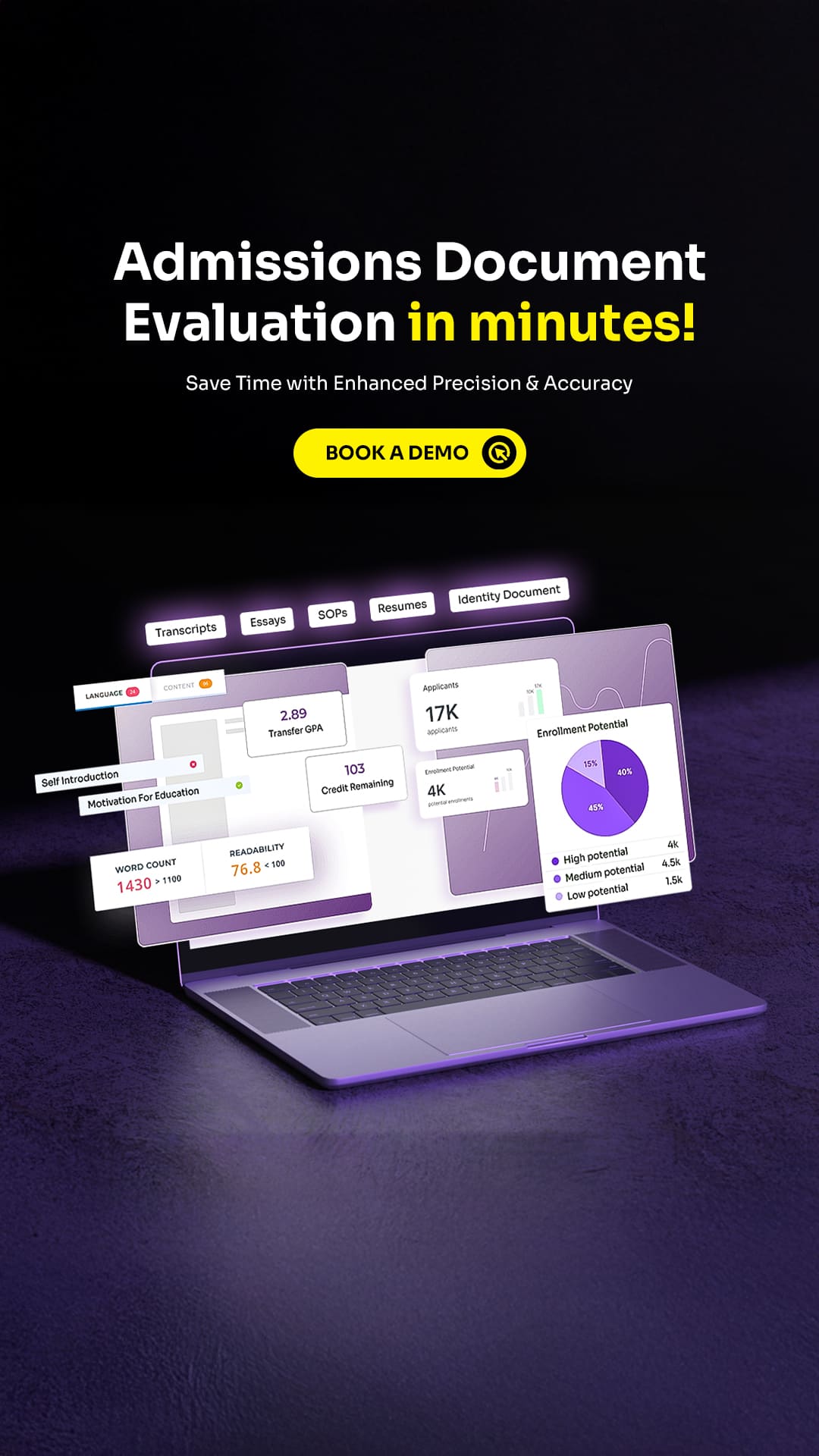Keeping up with the innovations of the 21st-century, institutions build strategies to equip students with the right skills and knowledge. This has led to the rise of STEAM 一 an educational framework that focuses on Science, Technology, Engineering, Arts, and Mathematics. This blog talks about how institutions can transition from STEM to STEAM in a smooth and efficient way.
Table Of Contents
Implementing STEAM in education requires developing new techniques to keep students engaged through every project and class. As the demand for cognitive skills such as creativity and critical thinking continues to grow, institutions face the challenge of integrating STEAM effectively into their existing curriculum. By focusing on the convergence of different STEAM components, institutions can improve student success.
Why has STEM been a prevalent focus?
The acronym STEM was introduced in 2001 at the National Scientific Foundation (NSF). Each component in STEM was thought to bring about a well-rounded education.
- Science helps students understand the world.
- Technology teaches them how to manipulate high-tech innovations.
- Engineering hones their problem-solving skills.
- Mathematics gives them the chance to eliminate errors.
In short, STEM allows students to prepare for the future. Exposing students to STEM early on allows them to explore concepts and encourages knowledge application. This increases their interest in STEM-related jobs; hence, they are likely to pursue them.
Additionally, companies need to stay updated and relevant with new and improved technological innovations, which led to the amalgamation of STEM into the educational frameworks for the youth.
STEM focuses on scientific and technological innovations, which have become increasingly important in the 21st century. It gives students the chance to develop their capabilities.
However, with all the benefits STEM brings to the table, it comes with some drawbacks.
Despite the quality education that STEM provides, it remains predominantly male-dominated. Additionally, STEM can sometimes overlook other important subject areas. For example, a student proficient in AI and machine learning without knowledge of philosophy and ethics might create biased algorithms that could impact millions.
To address these gaps, a new and improved framework was needed—one that incorporates a broader range of subjects and skills.
From STEM to STEAM
Recognizing the flaws within the STEM framework, students and educators felt the need for an improved skill-building curriculum so they could better succeed and help the economy grow. The influence of the Arts became apparent, especially when promoted in the K12 atmosphere.
A new term emerged that changed how people looked at educational frameworks — STEAM. The ‘A’ refers to the Arts stream. This minor change in the acronym played a crucial role in how institutions would prepare students for the future.
STEM focuses on hard scientific, technological, engineering, and mathematical skills to create new concepts. On the other hand, STEAM focuses on hard and soft skills to solve problems. STEAM tools— such as fine art imagery, imagination, perspective, etc. — deepen one’s understanding of Science, Technology, Engineering, and Math.
The goal of the STEAM educational framework is to base teaching on the natural ways of learning and customize it according to each student’s needs. This educational model combines the traditional academic subjects of Science, Technology, Engineering, Arts, and Math to create a more holistic curriculum.
How to use STEAM education in the classroom
STEAM is a modern approach that focuses on the learning process and the result. To increase innovation and learning opportunities, here are a few things institutes can incorporate in the classroom to build creativity and critical and logical thinking in students.
1. All teachers can be STEAM teachers
It is not the sole responsibility of one instructor to impart knowledge of STEAM teaching. At its core, STEAM is about incorporating different fields into one; the same can be applied to using different teachers’ knowledge to build one goal — building students’ thinking.
If different teachers are involved in creating projects with students, they can build a strong bond and understand each student’s capabilities. This would give them the opportunity to curate their lectures according to students’ interests.
2. Use the AI-STEAM course based module
Research shows that students make significant progress in AI-driven STEAM courses, shedding light on the feasibility and importance of incorporating AI with other disciplines. The study also expands upon how Computational Thinking (CT) is an essential skill in STEAM (CT is the foundation for AI technology, emphasizing problem-solving through deep learning and cognitive computing concepts).
AI-STEAM courses emphasize blending the topics of different subject areas that allow students to improve their practical knowledge by participating in real-life projects. If integrated into STEAM right, these courses can enhance students’ interdisciplinary knowledge and refine their grasp on related AI applications.
Hands-on practice combined with STEAM learning allows students to understand AI concepts and applications better. In addition, using Machine Learning concepts in a classroom allows them to apply their technical knowledge to different domains, even as they change and evolve.
3. Create specific STEAM projects to build certain skills
STEAM projects build students’ skills by encouraging them to collaborate with one another while also emphasizing upon their potential. Creating STEAM projects that allow students to work on two or three skills at a time gives them a higher chance of mastering these capabilities.
For example, if a project calls for ‘thinking outside the box,’ students will need to develop their creative and analytical brains to come up with new solutions. Through teamwork, they can learn from other students and take valuable initiatives.
Students should also be given individual projects to know how to work alone and focus on their weak points by failing and learning.
These projects are all about trial and error, which means students can fail; this will help them understand why they failed and how to do better.
4. Generate engaging and challenging projects
Students love a challenge. It gives them confidence in their abilities and thoughts processes. However, each student should be challenged based on their potential.
It’s important to create STEAM projects that allow students to play to their strengths and build on their weaknesses. If a project isn’t engaging or challenging enough, they will not learn. If a project is too complex to solve, it will de-motivate them. Hence, a project that poses the right challenge will keep the student engaged.
These projects are crucial as they are the building blocks to learning and understanding the real world. They help students choose STEAM-related fields in the future.
5. Build real-world situations
The goal of incorporating STEAM into the education system is to help students solve real-world challenges in the classroom. Students can build their problem-solving skills only when faced with a difficult situation.
Projects that are realistic enough will give them the confidence needed to think and develop solutions later on in their career. They will build and learn new skills, like researching, interviewing, testing, pitching ideas, etc.
Above all, group projects will allow them to collaborate with other students. Since recruiters look for people with collaborative skills, starting early will help them tremendously.
Is STEAM replacing STEM or enhancing it?
Dr. Kristin Cook, Associate Dean of Bellarmine’s Annsley Frazier Thornton School of Education, explains — “Incorporating the ‘A’ in STEAM brings in personal expression, empathy, meaning-making, and the purpose of what you’re learning.”
STEM opens many opportunities for students. However, not all of them can benefit from this framework.
Plus, even though there is a strong demand for a STEM workforce, recruiters face many challenges hiring STEM students. Companies are limited in their ability to train and retain an effective and sustainable workforce while also promoting innovation. The STEAM framework solves this problem.
Adding Arts to the curriculum can enhance the use of logical and creative skills in students, greatly improving their creative problem-solving capabilities. Students pursuing STEAM courses are more enthused about collaboration and flexibility. They build better mental connections and acquire a well-rounded education before stepping into the job industry.
STEAM is not replacing STEM. It is expanding the combination of artistic and humanistic concepts and enhancing it for all students.
Why is STEAM so important for the future?
STEAM is crucial for the future as it enhances scientific creativity and strengthens STEM learning by integrating Science, Technology, Engineering, Arts, and Mathematics. This approach helps students develop critical thinking skills, understand the connections between these fields, and fosters innovation. It prepares students to tackle complex challenges and equips them with the skills needed for a rapidly evolving job market.
To boost your institution’s student success, click the link below and get in touch with the experts at EDMO instantly.
Also Read: How can technology help in higher education marketing?
How to Increase Student Enrollment in Private Schools?
How to recruit prospective students using Omnichannel Marketing?










No comments yet. Be the first to comment!
Leave a Comment